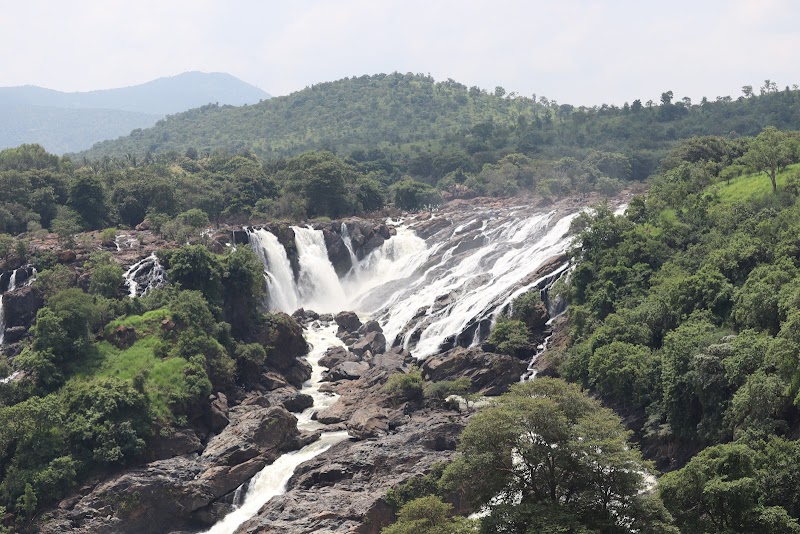
The Mahamastakabhisheka Festival: A Once-in-12-Years Pilgrimage at Shravanabelagola
Experience the Mahamastakabhisheka Festival at Shravanabelagola, an awe-inspiring event held every twelve years centered around India’s towering Bahubali statue. This pilgrimage offers a compelling hike combining spiritual tradition, challenging stone steps, and sweeping views of Karnataka’s landscape.
Start Early to Beat the Heat
Begin your ascent in the early morning hours for cooler temperatures and to avoid midday crowds, making the climb more comfortable.
Wear Comfortable, Grippy Footwear
The stone steps are uneven and can be slippery; sturdy hiking shoes with good traction will keep you steady on the climb.
Carry Adequate Water
Hydration is critical since shade along the route is minimal; bring at least 1-2 liters to stay refreshed throughout your hike.
Respect Local Customs
This is a significant religious event—dress modestly and follow guidance around photography and interaction with ceremonies.
The Mahamastakabhisheka Festival: A Once-in-12-Years Pilgrimage at Shravanabelagola
Every twelve years, the historic town of Shravanabelagola in Hassan, Karnataka, becomes a magnet for thousands drawn by the Mahamastakabhisheka Festival, an extraordinary event honoring the colossal 58-foot statue of Gommateshwara Bahubali. This massive monolithic statue, standing proud atop Vindhyagiri Hill, demands respect—not just for its sheer size but for the centuries of tradition it upholds.
Approaching the hill, the hike itself presents a practical yet rewarding challenge. Vindhyagiri rises approximately 350 feet above the town, with a climb of about 600 stone steps carved directly into the rock. The path weaves through sporadic clusters of trees, their branches stretching out as if to guide pilgrims upward, while the sun’s gaze intensifies around midday, transforming the stone steps into a heated ascent. The air carries the distant murmur of chants and drums, blending with the occasional call of local peacocks displaying their brilliance along the way.
The terrain is firm but uneven; footwear with solid grip is a necessity here. Hydration is critical, especially given the festival’s timing, usually between late January and March when the Karnataka sun is still strong but less punishing than in summer months. Early mornings or late afternoons are prime times to start the hike, offering cooler temperatures and softer light that sharpens the hill’s contours and colors.
At the summit, the focal moment arrives: the anointment ritual involves cascading sacred waters, sandalwood paste, and vibrant powders across the statue, drawing an almost reverent hush. You’ll find crowds not just in worship but also in awe of views expanding beyond the horizon—rolling plains punctuated by distant temples and the winding bends of nearby rivers daring your sight to follow.
Preparing for your visit means balancing reverence with readiness. Carry water and light snacks; rest spots are scarce but stones along the path lend themselves to brief pauses. If the legendary festival dates won’t align with your trip, visiting during off-cycle years still offers a taste of the ritual’s quieter echoes and a solid day hike.
The Mahamastakabhisheka Festival is not merely an event but a lived experience—an encounter with history, faith, and a landscape fiercely itself. Be ready for an adventure that tests your stamina and rewards with cultural depth and panoramic views that linger long after the climb ends.
Nearby Trips
All Adventures
Boat Charters
Water Activities
Adventures near Hassan, Karnataka
Discover the unique and memorable adventures that make Hassan, Karnataka special.
Frequently Asked Questions
How often is the Mahamastakabhisheka Festival held?
The Mahamastakabhisheka Festival takes place every 12 years, marking the ceremonial anointing of the Bahubali statue with sacred substances.
Is the climb to the Bahubali statue suitable for all ages?
While the climb is moderately strenuous due to 600 uneven stone steps, people with average fitness can complete it with breaks; children and seniors should prepare accordingly.
Can visitors attend the festival without participating in rituals?
Yes, visitors are welcome to observe the ceremonies respectfully without participating; following local customs on dress and conduct is important.
Are there any specific environmental concerns to consider when visiting?
The site is a protected heritage monument, so visitors must avoid littering and respect the sacred grounds to preserve its cultural and natural integrity.
Are guides available to explain the cultural significance during visits?
Local guides are available and recommended for those wanting deeper historical context and insight into the festival’s cultural importance.
What wildlife might be encountered around Vindhyagiri Hill?
Visitors might spot Indian giant squirrels and peacocks along the trail, with birds actively moving through the scrub and sparse forest patches.
Recommended Gear
Sturdy Hiking Shoes
Provides the grip and support necessary for climbing uneven stone steps safely.
Water Bottle
Keeping hydrated is vital throughout the climb, especially during the warm hours of the day.
Sun Protection (Hat, Sunscreen)
Shield your skin from intense UV rays, particularly when hiking mid-morning to afternoon.
Lightweight Backpack
Handy for carrying water, snacks, and any light extras without restricting movement.
Local Insights
Hidden Gems
- "Makara Basadi - a serene Jain temple close to the base of Vindhyagiri Hill"
- "Chandragiri Hill offering quieter walks and viewpoints opposite the main statue"
Wildlife
- "Indian giant squirrels"
- "Peafowl"
- "Various native bird species including drongos and bulbuls"
History
"The Bahubali statue dates back to 981 A.D., standing as a testament to Jain heritage and artistry. The Mahamastakabhisheka ceremony has been a continuous tradition for over a millennium."
